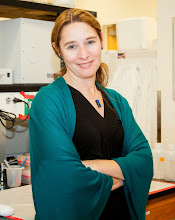Why is the sky blue?
Why is water wet? Kids ask the really tough questions, questions we
adults aren’t brave enough to voice anymore! To really communicate our science,
and engage the next generation with real science, not just collections of
facts, we need to talk to kids on their level. If we can explain our science to
a kid and hold their interest while we teach, we’ve succeeded in our
communication efforts.
 |
| From Wikimedia Commons |
Enter Alan Alda (remember M.A.S.H.?) and the Center for Communicating
Science at Stony Brook University.
Mr. Alda offers up the Flame
Challenge, an international contest where scientists submit their best
answers to a question posed by a kid. Last year’s question was “What is a
flame?”. This year brings an even tougher question, “What is time?”. The kicker
is in the judging - answers are judged not by scientists, but by 11-year-olds,
and they aren’t shy about offering their opinion. Talk about trial by fire! (or
perhaps, by flame)
If you want more help building skills before subjecting
yourself to the Flame Challenge, or to any group of scientifically curious kids
(or adults!), check out the course offerings by the Center for Communicating
Science. They have a great line-up of science communication courses and
workshops and even offer a certificate program. Check out the improv workshop…looks
like fun!


